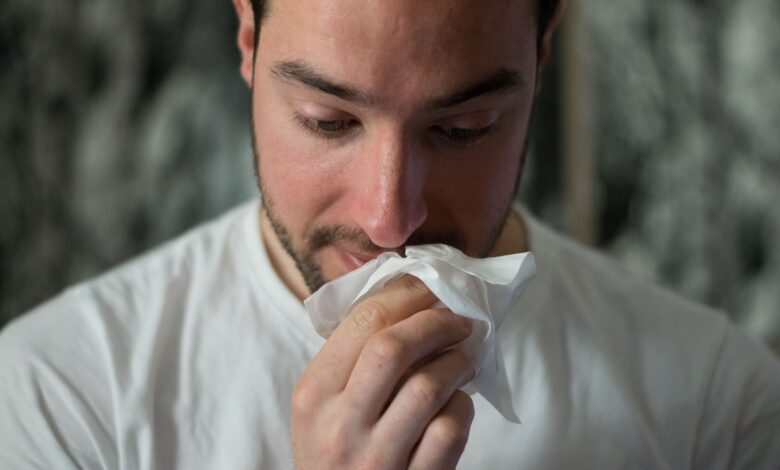
Chucking a sickie now costing Aussie businesses billions
One in 10 employees absent from work on any given day & Gen Zs have taken most sickies in 2022
Workplace absenteeism has cost Australian businesses $14.1 billion in lost productivity so far this year and is expected to rise to $24.2 billion by the end of 2022, and working from home is also having an unanticipated impact on business productivity and performance.
The findings are contained in a new report, the first study of its kind, released by global researchers, Frost & Sullivan who were commissioned by Rentokil Initial.
The report found that employers are experiencing 70 percent higher levels of absenteeism than this time last year, the impacts of which are devastating for productivity, teamwork and ultimately, the Australian economy.
Our latest AccomNews print issue is available now! Read it HERE
Rentokil Initial Managing Director Pacific, Andrew Stone said the continued presence of COVID-19 in the Australian population, including the spike in new cases caused by the Omicron variant, combined with a surge in cases of influenza and other respiratory illnesses, has caused levels of worker absenteeism to increase significantly over the pre-COVID norm.
“Our research highlights that at present, one in 10 employees are absent from work on any given day, which is negatively impacting businesses, not just in lost productivity, but also in less measurable effects like reduced customer service and satisfaction, reduced staff collaboration and teamwork, and lost revenue.”
Mr Stone said there are actions employers can start taking immediately to change this trajectory and reduce the sickness cycle within their work environments, including implementing a comprehensive hygiene protocol.
Best practice hygiene involves a 360 approach
The research indicated that whilst employers have invested significantly in workplace hygiene solutions, there is a gap in perception of the effectiveness of these solutions, and the majority of workers are still concerned about infection in the workplace.
“With many employees spending significant parts of their days at their workplace, mixing with co-workers, customers and other workplace visitors, hygiene plays a key role in minimising infections as well as increasing their confidence to be at work,” Mr Stone said.
Although all employers surveyed said they had a formal workplace hygiene plan or protocol in place, this often equated to hand sanitiser stations or providing and mandating mask wearing.
“The problem here is that best practice hygiene means more than providing a few bottles of hand sanitiser,” Mr Stone said.
“Businesses need to take a 360-degree approach to hygiene to make a real difference, which means looking at hand, surface, washroom and air hygiene.
“Only 30 per cent of employers told us their organisations use air purifiers and given that COVID is an airborne virus, and a lot of indoor spaces don’t have natural ventilation, it’s concerning that these solutions aren’t being prioritised.”
Younger workers are more likely to call in sick
Many employees have exhausted their sick leave balances with workers reporting an average of 10.9 days of absence so far in 2022 and 69 percent saying they have taken more sick leave in 2022 than pre-COVID.
Gen Zs (defined as those aged 18-24) have taken the most sick leave, averaging at 14.3 sickies this year, compared with 8.9 days by Baby Boomers (aged 58+).
Frost & Sullivan Managing Director, Mark Dougan said the COVID-19 pandemic has resulted in workers now being significantly more reluctant to go to work if they have mild symptoms, such as a slight sore throat or sniffles.
“This is much higher amongst the younger generation, with 74 percent of workers aged under 24 pulling sickies with relatively minimal symptoms,” he said.
Poor workplace hygiene is keeping employees at home
The study also reviewed remote working and what role hygiene plays in discouraging employees from returning to their physical workplace.
The results revealed that almost four-fifths of employees are concerned about workplace hygiene, with nearly one-fifth claiming that it is preventing them from returning to work.
“Working from home provided a great solution to keep industry moving during the COVID pandemic, but as life has returned to ‘normal’, we know that some employers are using a variety of incentives to encourage their workers back to the office after years of remote working,” Mr Dougan said.
The majority of employers (78 percent) said working from home is having a negative impact on their business, with 97 percent saying the biggest impact is reduced teamwork.
As well as being unfeasible for many organisations, nearly a third (32 percent) of employers have also seen a decline in collaboration and more than a quarter (26 percent) said working from home has negatively affected customer service and satisfaction levels.
“For those businesses who are finding flexible and remote is negatively impacting their business, there’s an urgent need for additional attention to be given to the issue of workplace hygiene,” Mr Stone said.
“Employers have a responsibility to protect their employees, customers and visitors in the workplace environment and employees have an important role to play in putting more pressure on organisations to take action and implement the right approach.”

AccomNews is not affiliated with any government agency, body or political party. We are an independently owned, family-operated magazine.







